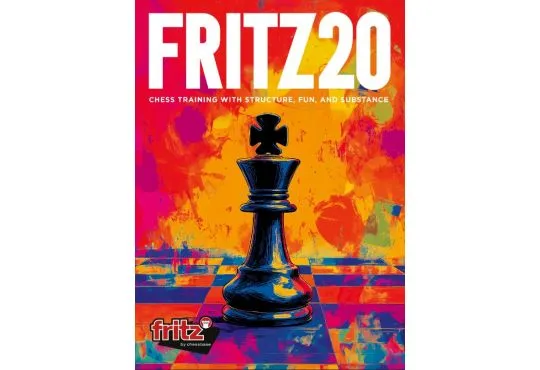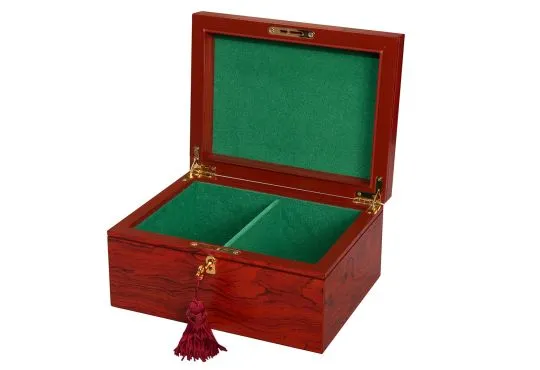The Ultimate Guide to The Rook Chess Piece
Rook chess is one of those things you assume you understand. Straight lines, corner squares, castle-looking things — how hard can it be, right?
Everyone's too busy obsessing over the queen's power trip or the knight's weird little dance. Meanwhile, the Rook just sits there — silent, square-shouldered, and completely ready to destroy your position the moment you blink.
But here's the thing. The Rook has been everything from a siege weapon to a berserker biting his own shield.
Now it gets benched until move fifteen, when you remember it exists and frantically try to castle before disaster strikes.
This isn't a guide about how the Rook can move. You can Google that if you want history... you'll find it right here!

Table of contents
- The Rook Was Never Just a Tower
- How the Rook Took Over the Corners
- Art, Elephants, and Berserkers — The Rook's Wardrobe Phase
- How Rook Chess Became the Art of the Sneak Attack
- Endgame Power Moves and Rook-Led Survival Stories
- Computers, Online Chess, and the Rook’s Reinvention
- The Rook Deserves Better
- Frequently Asked Questions
The Rook Was Never Just a Tower
Let's get something straight — rook chess didn't start with a tiny castle stuck on the side of the board.
The name "rook" comes from the Persian word rukh, which means chariot.
Not a polite little ride around the countryside; think war chariot, wheels screeching, archers loaded, crushing whatever stood in its path.
That's the energy the original Rook brought into the game of chess.
When chess moved from India to Persia, and then to the Arab world, the piece kept changing shape. In India, it was the ratha — also a chariot. In Arabic, rukh stuck, but it also sometimes became ṭābiyya, meaning fortress.
Then it hit Europe, and people looked at this terrifying mobile siege weapon and said, "Oh, cool, a little tower."
By the time the game reached France and Spain, the Rook could move across entire ranks and files, but its image had calcified into a castle.
-
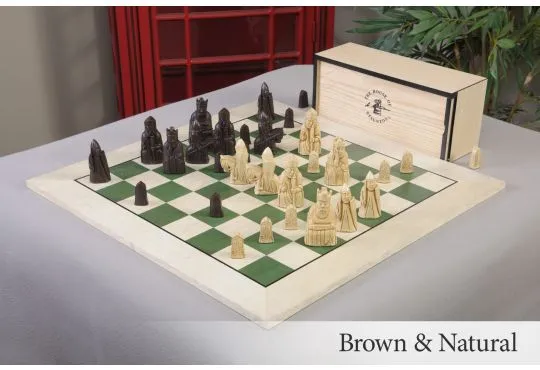 Free Worldwide Shipping
The Isle of Lewis Chess Set, Box, & Board Combination Enjoy Savings of 32% Off MSRP When Purchased as a Combination
Free Worldwide Shipping
The Isle of Lewis Chess Set, Box, & Board Combination Enjoy Savings of 32% Off MSRP When Purchased as a Combination$597.95
Starting at $409.00
To $518.95
-
 Tap N Set Digital Chess Clock - Available in Push Button or Touch Sensor The Official Chess Clock of the US Chess Federation - The World's Only Smart Phone Programmable Clock
Tap N Set Digital Chess Clock - Available in Push Button or Touch Sensor The Official Chess Clock of the US Chess Federation - The World's Only Smart Phone Programmable ClockStarting at $54.95
To $59.95
-
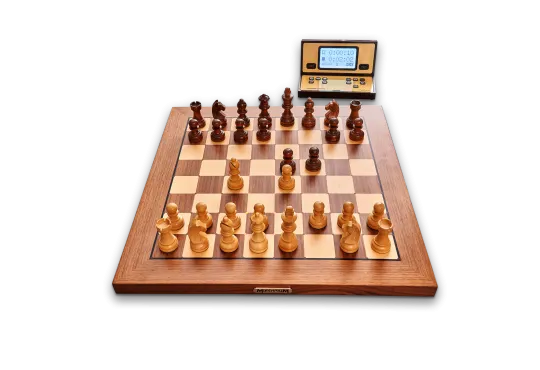 REFURBISHED - The Millennium ChessGenius Exclusive Chess Computer
REFURBISHED - The Millennium ChessGenius Exclusive Chess Computer$899.95
Starting at $674.95
To $784.90
The French call it tour, the Spanish say torre, and suddenly nobody remembers the chariot anymore.
Somewhere along the way, people in Russia decided it looked more like a boat and called it ladya. It then became a ship in Thailand.
And in modern Hindi, it's affectionately nicknamed haathi, the elephant — because, sure, why not add another form to the list?
This one piece has been a tower, an elephant, a fortress, and a chariot.
No wonder rook chess never makes sense until you study the baggage it's carrying.
How the Rook Took Over the Corners
Back in the earliest forms of the game, the Rook wasn't banished to the corners.
It was front and center — charging down the battlefield like a possessed battering ram.
But as the rules evolved, so did the board layout.
And when the rook movement stayed long-range but everything else sped up (thanks, modern queen), the Rook got pushed to the side of the board, stuck behind pawns, and left to sulk until someone remembered it existed.
That's where Castling rights came in.
A brilliant hack from the late Middle Ages, castling lets you finally yank your king out of danger while activating a rook in one smooth, theatrical move.
It turned that lonely corner piece into a surprise MVP. Just don't forget your castling rights vanish the moment you get cute and move the Rook early.
The corners also gave the Rook a new flavor of power — Back-rank defense.
Leave your king exposed with no luft, and that unassuming Rook turns into a vengeful ghost, slamming down pieces like it's settling a score.
So, while bishops were slicing diagonals and knights were hopping fences, the Rook claimed the edge. It camped out, waited for its moment, and then launched itself across the board like a tower with a grudge.
Art, Elephants, and Berserkers — The Rook's Wardrobe Phase
The Rook has always been extra. The Rook went through full costume changes... one century, it's an elephant, then in another, a Viking.
In early Indian and Persian sets, the Rook often appeared as a carved elephant carrying a fortress on its back.
Some of the oldest chess pieces were elephants with little crenelated boxes perched on top — basically a rook lift in sculpture form.
When the game reached medieval Europe, the Rook's appearance became even more theatrical. One famous set — the Lewis chessmen — features standing warriors with wide eyes and shields in their mouths.

No, seriously... these weren't towers. These were berserkers.
Eventually, Europeans toned it down and gave us the castle look. But not before passing through a phase of hybrid designs: towers riding elephants, rooks with windows, or abstract blocks that confused everyone.
-
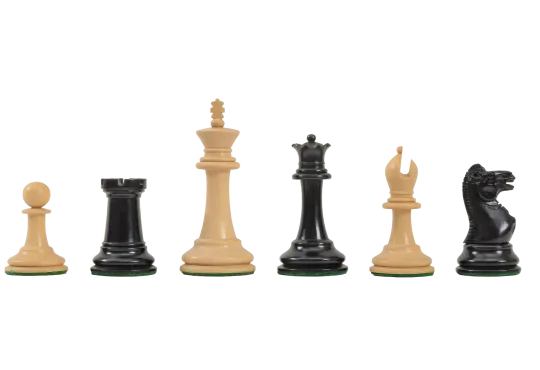 Free Worldwide Shipping
The Library Collection - The Anderssen Dropjaw Series Luxury Chess Pieces - 3'' King
Free Worldwide Shipping
The Library Collection - The Anderssen Dropjaw Series Luxury Chess Pieces - 3'' KingStarting at $349.00
To $897.00
The Staunton set finally made the clean turret official, and chess federations everywhere sighed with relief.
No other chess piece has worn more faces or carried more history across the board.
How Rook Chess Became the Art of the Sneak Attack
If there were a prize for the most underappreciated opening piece, the Rook would win by a landslide.
By the time it actually moves, you've probably forgotten it exists—and that's exactly when it becomes dangerous.
That’s the thing with rook chess. It rewards the ones who wait.
It thrives on Open-file control, and nothing says "you're in trouble" like a rook doubling up on an open file with its sibling. When the foundation is set, they hit harder than any piece on the board.
When you coordinate two rooks, you unlock every aggressive idea the piece has been holding in. Doubled rooks bring pressure, often forming a Rook battery behind a passed pawn or a trapped king.
The moment a rook reaches the seventh rank, the mood shifts. A Seventh-rank invasion can flip losing positions or trap a king permanently.

And don't forget the classics; the Rook lift still sneaks up on players who forget it's even an option.
The Rook doesn't show up early because it doesn't need to. But when it finally steps in, it's not subtle. It's the closer. The checkmate enforcer.
Endgame Power Moves and Rook-Led Survival Stories
So let's be honest for a second: rook endgames are where chess careers are made or destroyed.
You can mess up the opening, improvise the middlegame, and still survive. But if you botch a rook and pawn endgame, you're toast. And your opponent will act like they planned it all along.
Rooks love simplified positions. With fewer pieces in the way, they dominate space, slice across the board, and hunt kings like debt collectors.
Even a single pawn becomes terrifying when paired with an active rook and decent rank control.
That's why players memorize endgame setups like their rent depends on it. They study the Lucena position and the Philidor defense like religious texts. In both, the Rook is the main character.
Whether you're building a bridge or blocking checks, your Rook does the heavy lifting.
Then there's the art of defense. A single rook can hold off a queen for twenty moves or more. In Rook versus minor piece endgames, one clean check can swing the evaluation. But if your Rook's stuck on a semi-open file, passivity becomes your worst enemy.
This is why strong players love the Rook.
Computers, Online Chess, and the Rook’s Reinvention
If any piece thrived under computer scrutiny, it’s the Rook.
While engines exposed the limits of certain positions and ruined everyone’s favorite queen sacrifices, the Rook quietly became even more important.
In online play, it’s often the last major piece standing. And in most databases, it's also the one saving bad positions or finishing good ones.
Engines redefined how players approach rook endgames. Old principles like “cut off the king” and “check from behind” are now non-negotiable.
Tablebases have confirmed that many rook and pawn endgames are winnable — but only if you find 40 perfect moves in a row under time pressure. No big deal.
Online games also reward aggression, and rooks love chaos. They swing from one wing to another, chase down passed pawns, and punish exposed kings with clinical precision.

In fast games, strong Rook movement often beats clever ideas. If your Rook is active and centralized, you’re already ahead.
You’ll also see more Seventh-rank invasions and sharp tactics online, especially in blitz. Players gamble on ladder mates, Rook lifts, and sneaky batteries instead of safe play.
That kind of speed-fueled strategy has made the Rook feel faster, flashier, and more present in casual play.
Engines also exposed the dark side. Put your Rook on a semi-open file too early, and it becomes dead weight.
Misplace it during a queen trade, and your opponent gets rank control for free.
-
 Free Worldwide Shipping
The Camaratta Collection - The Sammy R Series Commemorative Chess Pieces - 4.4" King
Free Worldwide Shipping
The Camaratta Collection - The Sammy R Series Commemorative Chess Pieces - 4.4" KingStarting at $619.00
To $7,309.00
The Rook Deserves Better
For a piece that spends half the game boxed into the side of the board, the Rook has one of the wildest resumes in chess.
It’s been a chariot, an elephant, a fortress, a boat, and occasionally a bloodthirsty Norseman gnawing a shield.
It has survived every rule change, every redesign, and every cultural translation — and somehow, it still gets treated like the last kid picked for the team.
Whether it’s doubling up, climbing ranks, or dropping the final check, the Rook rarely misses once it starts moving.
It’s every empire, engine, and endgame lesson packed into one stone cylinder that never needed flair to get the job done.
Frequently Asked Questions
The name originates from the Persian word "rukh," meaning "chariot." Over time, European players misinterpreted the symbol and began referring to it as a tower. That misinterpretation stuck. So while the rook chess piece now looks like a turret, it began life on wheels, not on stone.
The Rook symbolizes strength, structure, and file dominance. On the board, it represents raw power held in reserve. In culture, it’s used in heraldry, branding, and fiction to suggest protection, reliability, and well-placed aggression. It’s not flashy, but it’s the backbone of good defense and game-changing offense.
In India, the rook chess piece is often called haathi, meaning elephant. That’s because early sets depicted it as an elephant carrying a tower, matching its original role in war. The nickname stuck, especially in Hindi-speaking regions where the piece still evokes that historical connection.
In a rook versus minor piece matchup, the Rook usually has the edge — especially with pawns. But it depends on positioning. A misplaced rook can underperform, while a well-placed bishop on an open file might hold equal ground.
The name "rook" comes from the Persian word rukh, which meant chariot — a direct holdover from early Indian versions of chess, where the piece represented a war chariot. These weren’t simple carts; they had large, fortified structures on them. As chess spread into Europe, the Italian word rocca (meaning fortress) may have influenced the piece’s castle-like design.


